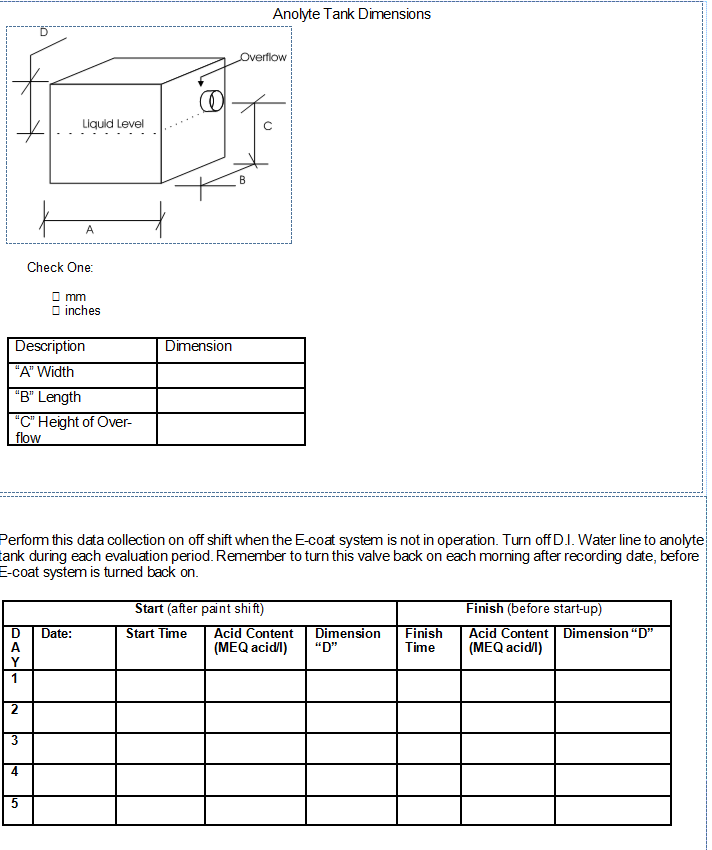Procedure to Analyze Back Diffusion
Product Support and Customer Service
For Further support visit our Contact Page
Safety
Think and act in a safe manner. Always disconnect power and use a lockout before you work on the E-coat system, or any of the related subsystems. Observe any confined space conditions. Use the appropriate safety equipment and clothing for the task. Please carefully read all the instructions listed below to familiarize yourself with the project before attempting to perform any of the work.
Required Materials
- Titration Equipment
- Titration Solutions
Required Tools
- None
-
General
Increase in the Back Diffusion of Neutralizer from the Membrane Electrode System to the ED Bath.
Back diffusion is the process by which a difference in the concentration across a semi-permeable membrane is equalized. Some would refer to this as osmosis. Generally, the concentration of neutralizer inside the ME Cells is several times greater than what is in the ED bath. The back diffusion rate is the greatest during periods when there is no cathode in the ED bath. When a cathode is present, the voltage gradient and resulting polarization driving force (toward the Cell) around the Cell is much, much greater than the osmotic pressure driving force (outward from the Cell), reducing the risk of back diffusion. You may follow the procedure below to perform an analytical check to estimate the amount of back diffusion that your system has and this figure can be compared to other typical systems.
Back diffusion is always happening. Trying to understand why it has increased can be a challenge. Is it the membrane shell?
Perform this data collection on an off shift when the ED system is not in operation. Turn off D.I. Water line to anolyte tank during each evaluation period. Remember to turn this valve back on after recording date, data and before the e-coat system is turned back on.
Use the form below to take readings for five (5) consecutive off periods. It is necessary to measure the acid concentration and report the figures in MEQ acid/liter. Fax this chart back to UFS for analysis and a report.
BULLETIN 990186
